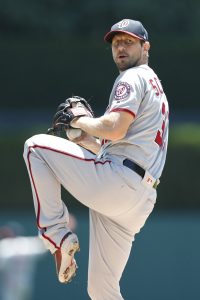It’s all but a foregone conclusion that fans won’t be in the seats if and when Major League Baseball holds its 2020 Opening Day. But most agree that some baseball — so long as it can be staged safely and responsibly in the midst of a global pandemic — is better than none.
There were several signs of promise today surrounding the outlook for a 2020 campaign of some kind. That’s not to say there’s a clear plan in place. Far from it, in fact. But it seems avenues are opening.
ESPN.com’s Jeff Passan discussed the situation at length, reporting that “nearly everyone along the decision-making continuum … has grown increasingly optimistic” of staging a season of some kind. That seems like a reasonably important broad-based sentiment, though we’re still quite a few steps away from hope converting into real, live ballgames.
Passan covers a lot of subjects in the piece, which is well worth a read. Just don’t expect any new direction in terms of how it’s all supposed to come together. That hasn’t been narrowed down in the least.
To some extent, the increased options that justify the optimism also make it hard to know what the 2020 season will look like. State and local officials will ultimately have final word on just what is possible. There’s some good news on that front also.
New York governor Andrew Cuomo indicated today that he sees a path to baseball being played in New York City this summer, as the Associated Press reports (via WTOP News). Of course, at the moment there’s no expectation that spectators would be on hand, but seeing games in Queens and the Bronx would nevertheless be an inspiring sight given the brutal toll of the coronavirus in the country’s biggest city.
It’s much the same situation in Chicago, home of another pair of MLB franchises, as Vinnie Duber of NBC Sports Chicago writes. Mayor Lori Lightfoot says that the city has contemplated the return of professional sports. While it’s nowhere near happening, she sounded a generally hopeful tone: “But can I envision a world where baseball might return to Chicago this summer? Yes. Is it likely to be without fans? Probably.”
Even if the logistics are lined up, there’s still the matter of getting the league and players on the same page. The sides drew up and signed a formal agreement, but immediately came to disagree on what it means for player salaries if games are staged without fans. The union says the late-March agreement establishes that players must be paid on a full pro rata basis for any games, regardless whether anybody paid to sit in the stands.
Passan provides some specific language that bears upon the assessment of that subject. Unfortunately, the clauses cited seemingly confirm that there’s some ambiguity in the contract on this point. As we explored recently, it’s bizarre to see a new and unnecessary layer of complication added through this oddly framed document, the interpretation of which could now become a major issue bearing upon the ability to resume play and labor relations more generally.


